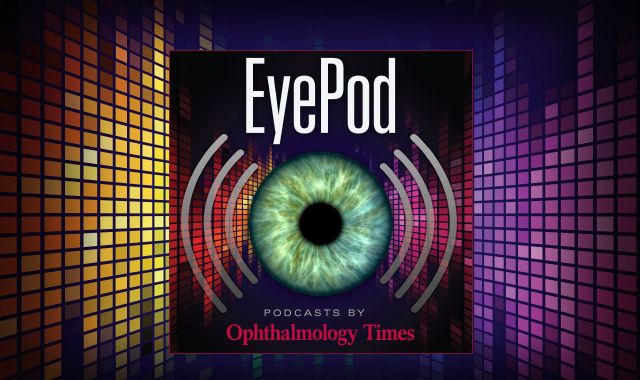News
Article
Self-reported vision problems tied to increased sleep dysfunction in older adults
Author(s):
Key Takeaways
- Self-reported visual difficulties correlate with increased sleep medication use, posing risks for falls and cognitive decline in older adults.
- Vision plays a crucial role in regulating sleep and circadian rhythms, with light therapy addressing certain sleep disorders.
(Image Credit: AdobeStock/Rido)

A new study of visual impairment and sleep dysfunction found that individuals with self-reported visual difficulties were significantly more likely to take medication for sleep.
Because visual difficulties and use of medications to induce sleep are associated with falls and declines in cognition,1 the authors, Alan Y. Huang, Joshua A. Ehrlich, MD, MPH, and Ali Hamedani, MD, MSH, advised that studies be undertaken to study these comorbidities.
Huang and Hamedani are from the Departments of Neurology, Ophthalmology, and Epidemiology, Perelman School of Medicine, University of Pennsylvania, Philadelphia, and Ehrlich is from the Department of Ophthalmology and Visual Sciences, University of Michigan, and the Survey Research Center, Institute for Social Research, University of Michigan, both in Ann Arbor.
Vision and circadian rhythm
“Vision is a key regulator of sleep and circadian rhythms. The capture and transmission of light to the hypothalamus through the retinohypothalamic tract stimulates the release of hormones such as cortisol and melatonin, which control sleep-wake cycles to generate the endogenous 24-hour circadian rhythm,2,3” the authors explained.
They also pointed out that certain sleep disorders can be addressed with light therapy, serving as a natural experiment for the role of visual input in sleep.3
However, in older adults, both the mechanisms and directionality of the relationship between vision and sleep are incompletely understood.4 In this segment of the population that often experiences visual impairment and sleep dysfunction impaired quality of life can result,5,6 according to previous reports.
While previous studies have delved into the association between self-reported visual difficulty and sleep duration,7-10 none have addressed the effects of different age-related eye diseases on other aspects of sleep.11-13
This study investigated the relationship between self-reported and performance-based measures of visual function, diagnosed age-related eye disease, and self-reported sleep dysfunction. The authors used National Health and Aging Trends Study data, a longitudinal, which represents US Medicare beneficiaries.14,15
The participants’ vision was assessed using self-report and objective assessments (distance and near acuity, contrast sensitivity). Medicare claims data identified age-related macular degeneration, glaucoma, diabetic retinopathy, and cataract. The main outcomes were self-reported sleep disturbances, defined by difficulties in sleep initiation, maintenance, and medication use, the investigators recounted.
Analysis findings
A total of 3,817 patients were included in the study.
The following respective percentages of the cohort were found for difficulty with sleep initiation, maintenance, and medication use, 41.7%, 44.2%, and 26.5%.
The investigators reported, “In unadjusted models, self-reported visual difficulty was associated with sleep initiation (odds ratio [OR], 1.80, 95% confidence interval [CI]: 1.43–2.29) and maintenance difficulties (OR 1.53, 95% CI: 1.16–2.02) and sleep medication use (OR 1.68, 95% CI: 1.27–2.24). After adjusting for covariates, self-reported visual difficulty remained significantly associated with sleep medication use (OR 1.40, 95% CI: 1.00–1.95). Near acuity and contrast sensitivity were associated with sleep initiation difficulties but did not remain significant after adjustment. No associations were found between ophthalmic diagnoses and outcomes.”
Key takeaways
“We found that self-reported visual impairment was associated with 40% greater odds of sleep medication use after adjusting for confounders.
Considering that visual impairment has been reported as a risk for falls and cognitive decline in older adults, the investigators suggested that “sedative and hypnotic medications used to promote sleep are associated with an increased risk of falls and cognitive decline, and many are included in the Beers Criteria of potentially inappropriate medications for adults over 65 years of age.16,17
Visual impairment has been suggested to be a risk factor for falls and cognitive decline in older adults.5,18,19 Considering that, sleep medications may interact with or mediate some of the relationship between visual impairment and these outcomes and this should be explored in future studies, the authors suggested.
References
Huang AY, Ehrlich JR, Hamedani AG. Visual impairment, age-related eye disease, and sleep dysfunction in older adults. Eye. 2025; https://doi.org/10.1038/s41433-025-03777-3
Zheng L, Wu X-H, Lin H-T. The effect of cataract surgery on sleep quality: a systematic review and meta-analysis. Int J Ophthalmol. 2017;10:1734–1741.
van Maanen A, Meijer AM, van der Heijden KB, Oort FJ. The effects of light therapy on sleep problems: a systematic review and meta-analysis. Sleep Med Rev. 2016;29:52–62.
Quera Salva MA, Hartley S, Léger D, Dauvilliers YA. Non-24-hour sleep–wake rhythm disorder in the totally blind: diagnosis and management. Front Neurol. 2017;8:686.
Lee SSY, Nilagiri VK, Mackey DA. Sleep and eye disease: a review. Clin Exp Ophthalmol. 2022;50:334–44.
Nagarajan N, Assi L, Varadaraj V, et al. Vision impairment and cognitive decline among older adults: a systematic review. BMJ Open. 2022;12:e047929.
Scullin MK, Bliwise DL. Sleep, cognition, and normal aging: integrating a half-century of multidisciplinary research. Perspect Psychol Sci J Assoc Psychol Sci. 2015;10:97–137.
An Y, Joo C-K. The U-shaped association between self-reported sleep duration and visual impairment in Korean adults: a population-based study. Sleep Med. 2016;26:30–36.
Ramos AR, Wallace DM, Williams NJ, et al. Association between visual impairment and sleep duration: analysis of the 2009 National Health Interview Survey (NHIS). BMC Ophthalmol. 2014;14:115.
Peltzer K, Phaswana-Mafuya N. Association between visual impairment and low vision and sleep duration and quality among older adults in South Africa. Int J Environ Res Public Health. 2017;14:811.
Tamura N, Sasai-Sakuma Taeko, Morita Y, et al. Nationwide cross-sectional survey of sleep-related problems in Japanese visually impaired patients: prevalence and association with health-related quality of life. J Clin Sleep Med. 2016;12:1659-1667.
Sia JT, Lee EPX, Cheung CMG, et al. Associations between age-related macular degeneration and sleep dysfunction: a systematic review. Clin Exp Ophthalmol. 2022;50:1025–1037.
Wu M, Liu X, Han J, Shao T, Wang Y. Association between sleep quality, mood status, and ocular surface characteristics in patients with dry eye disease. Cornea. 2019;38:311.
Mentek M, Aptel F, Godin-Ribuot D, et al. Diseases of the retina and the optic nerve associated with obstructive sleep apnea. Sleep Med Rev. 2018;38:113–130.
Freedman VA, Schrack JA, Skehan ME. National Health and Aging Trends Study User Guide: Rounds 1-12 Beta Release. 2023. Available at: https://www.nhats.org/researcher/nhats/methods-documentation?id=user_guide. Accessed November 25, 2023
Schroeck JL, Ford J, Conway EL, Kurtzhalts KE, Gee ME, Vollmer KA, et al. Review of safety and efficacy of sleep medicines in older adults. Clin Ther. 2016;38:2340–2372.
American Geriatrics Society 2023 updated AGS Beers Criteria® for potentially inappropriate medication use in older adults. J Am Geriatr Soc. 2023;71:2052–812023 American Geriatrics Society Beers Criteria® Update Expert Panel.
Ehrlich JR, Hassan SE, Stagg BC. Prevalence of falls and fall-related outcomes in older adults with self-reported vision impairment. J Am Geriatr Soc. 2019;67:239–245.
Livingston G, Huntley J, Liu KY, Costafreda SG, Selbæk G, Alladi S, et al. Dementia prevention, intervention, and care: 2024 report of the Lancet standing Commission. Lancet. 2024;404:572–628.
Newsletter
Don’t miss out—get Ophthalmology Times updates on the latest clinical advancements and expert interviews, straight to your inbox.




